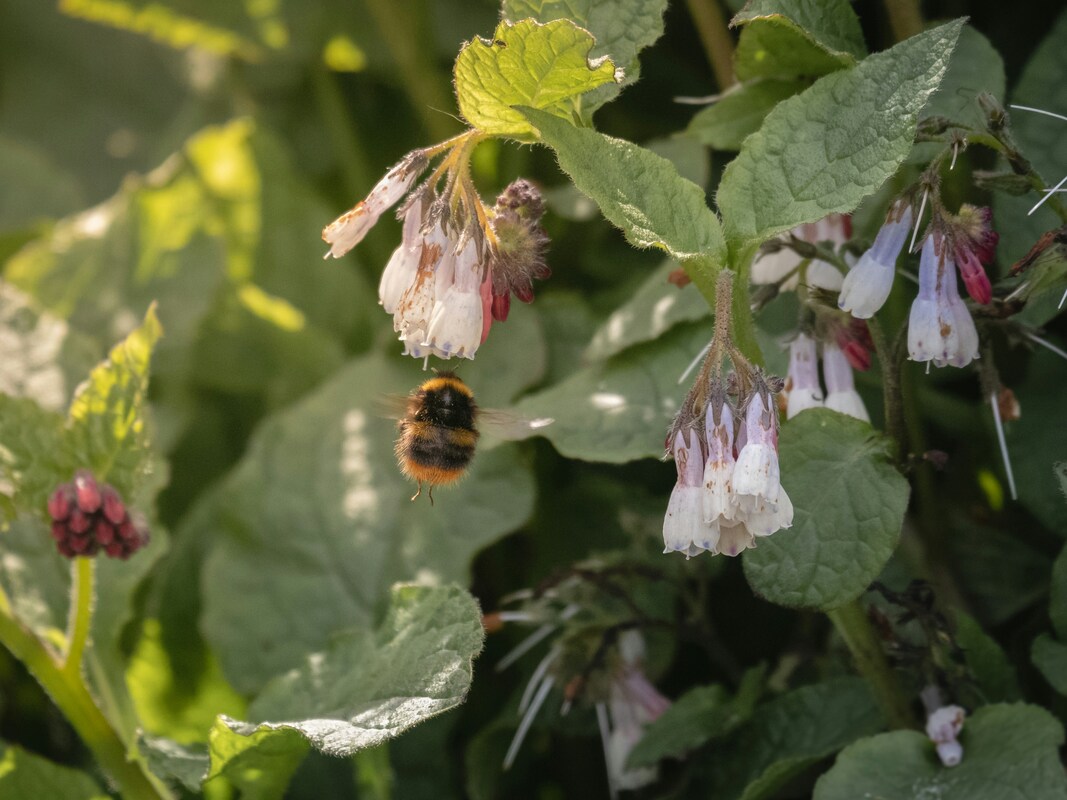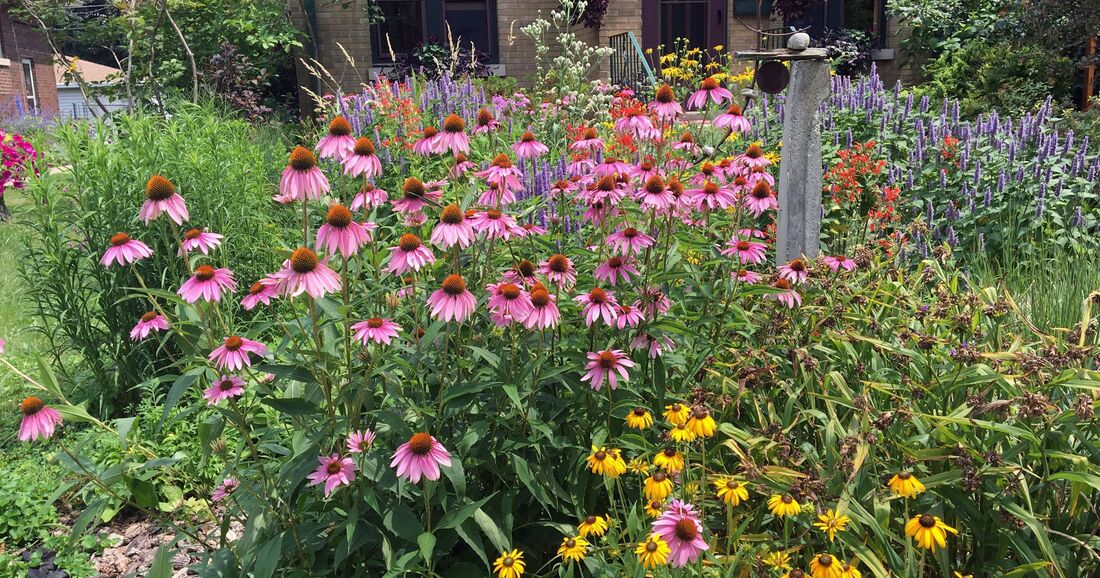|
2/20/2024 0 Comments Using Natural Fertilizers Ecological Gardening Practices
Part 5 Using Natural Fertilizers ‘Adopt the pace of nature’ - Ralph Waldo Emerson Over the past month, we have covered several eco-gardening topics: discover your ecoregion, growing the right plants, keeping your soil covered, and attracting beneficial insects. But if you implement all these practices but are still using synthetic fertilizers, weed killers, and pest controls on your lawn and in your landscape, you are basically shooting yourself in the foot, negating all your positive efforts. Most synthetic products can damage the beneficial microorganisms in the soil. If your soil is healthy, its teaming with beneficials that are doing all the work that a fertilizer would do. They help convert nitrogen from the air into the soil making it a usable form of food to the plants. They help decompose dead plant matter into what the plants need. By continually using synthetic fertilizers on our lawns, edible gardens, and landscapes, we lose this important natural ecosystem, and the plants come to depend on us. This makes more work for us! Here are alternatives that mimic a natural ecosystem . . .
Other options:
As we make the switch from synthetic to natural, we must realize that we can’t rush Mother Nature. Natural pest solutions and fertilizers take time. They work, but they work on their own time table because they are establishing a healthy ecosystem. In a culture that wants to see results quickly (think same-day Amazon delivery), we need to ‘adopt the pace of nature’, slow down, and let nature do the work for us. If the thought of giving up a green, perfect lawn is something you just can't do cold turkey, then consider easing your way into a more natural approach. Here are three tips: 1. Switch to a natural lawn fertilizer like Milorganite. Apply it in the spring or ideally in the fall. 2. Fertilizer less frequently. 3. Reduce the size of your lawn and add native plants. This will reduce the amount of fertilizer and water inputs right away! That wraps up our eco-gardening series. If you want to learn more, mark your calendars for Saturday, March 23. Naturalist, Beth Goeppinger will be here presenting ‘Planning Your Native Landscape’. You can also check out the links below. LINKS: Homegrown National Parks Native Plant Finder Natural Fertilizers to Improve Garden Soil
0 Comments
2/2/2020 4 Comments Gardening Intentions for 2020How are you doing on your resolutions, intentions, commitments for 2020? Maybe you have long given that new year’s practice up, but I’m going to suggest making an intention for the new season of gardening that is approaching. As winter is in no hurry to leave yet, these quiet months are perfect for reflecting on new things you many want to try, new plants to grow, new areas to landscape, ways to improve the lawn, how to use fewer chemical inputs, or perhaps it’s time to downsize to a patio garden. There are several movements within the world of horticulture that may interest you and give you some direction as to how you intend to spend your time growing this year. The first is one of regenerative gardening. It’s about being more conscientious and intentional about building up the soil we grow in. Composting, using natural and organic products, and no-till practices all aim to rebuild the soil’s organic matter and return nutrients to the soil. Healthy soil means healthy plants which lead to healthy food. Intention: Compost for a more sustainable garden. First step: Build or buy a compost bin. A second movement you may hear about this spring is small space gardening. Even in a large space, you can carve out a secluded spot in which to unwind. This can be done by seeking out dwarf varieties of plants which are becoming more prevalent. You may need to redesign an area if plants have become overgrown and crowded. Another strategy is to make use of vertical space and install a vertical garden. This is nothing new but there are new products available that make vertical gardening easy. Adding a small water feature can help sooth away the stress of the day. Intention: Create an outdoor space to relax in. First step: Analyze current landscape and consult with a designer. The color of the year is our next trend and it may surprise you. Classic blue. It’s already strong in interior design and fashion, but this is a great color to bring outside as well. Add blue pots to your outdoor garden, paint a trellis or fence, buy a blue birdbath, and grow plants with blue flowers. The intention isn’t to be trendy but adding color to your space can be reinvigorating. This hue of blue especially brings a sense of calmness. It’s solid and dependable in a time that isn’t so much. Intention: Add color to the garden. First step: Look up blue flowers easy to grow from seed. Finally, plant for wildlife. This movement is becoming stronger as more people become aware of the benefits of protecting pollinators from the many dangers they face. Grow plants that attract them and avoid using chemicals as much as possible. Natives are a good place to start. Intention: Plant a pollinator garden. First step: Find a list of pollinator plants and seek them out. Whether you try these intentions or not, hopefully you are thinking about the growing season that lies ahead and the possibilities it holds. As you do, you awaken the gardener within. Tracy Hankwitz is a horticulturist and general manager at Burlington Garden Center. For a list of pollinator plants and blue flowers to start from seed, go to www.burlingtongardencenter.com. |
|
|
STORE INFO
5205 Mormon Road Burlington, WI 53105 262.763.2153 |






